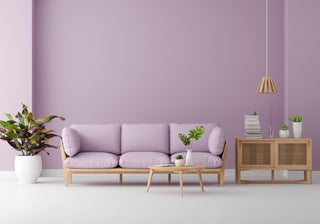In a world of disposable decor and fast-furniture trends, a quiet revolution is taking place—one that values craftsmanship over convenience and longevity over fleeting style. The slow furniture movement embraces thoughtful design, responsible materials, and enduring quality, offering an antidote to the cycle of constant replacement. This philosophy transforms furniture from temporary purchases into lifelong companions that tell a story.
The Problem With Fast Furniture
The modern furniture industry thrives on quick turnover, producing inexpensive pieces designed for short-term use. These mass-produced items often rely on particleboard, synthetic veneers, and weak joinery that quickly show wear. The environmental cost is staggering—tons of discarded furniture clog landfills each year, while the constant demand for new pieces fuels deforestation and wasteful manufacturing. Beyond ecological concerns, fast furniture fails to satisfy emotionally, leaving homeowners in a perpetual cycle of dissatisfaction and replacement.
The Principles of Slow Furniture
Slow furniture follows the ethos of the broader slow movement—an intentional approach that prioritizes quality, sustainability, and mindful consumption. Each piece is designed with care, constructed to last, and made to be repaired rather than replaced. Natural materials like solid wood, stone, and organic textiles age gracefully, developing character over time. The designs favor timeless aesthetics that transcend trends, ensuring relevance across decades rather than seasons.
The Value of Craftsmanship
True quality reveals itself in the details—dovetail joints that strengthen with time, hand-planed wood surfaces that feel warm to the touch, and upholstery stitched for durability rather than speed. Artisans who practice traditional techniques create furniture meant to endure, often using methods passed down through generations. This level of craftsmanship ensures structural integrity while infusing each piece with human touch and individuality.
Sustainability as a Core Value
Slow furniture naturally aligns with environmental responsibility. Sustainably harvested wood, natural finishes, and non-toxic materials reduce harm to ecosystems and indoor air quality. Because these pieces last for decades, they dramatically decrease the demand for replacements, lowering overall consumption. Many slow furniture makers operate locally, minimizing transportation emissions and supporting regional economies.
The Emotional Connection
Unlike disposable furniture that feels impersonal, slow furniture invites emotional attachment. A dining table that bears the marks of family meals, a chair that molds comfortably to its owner over years—these pieces become part of life's narrative. The patina of age enhances rather than diminishes their beauty, creating heirlooms that carry stories across generations. This deep connection fosters appreciation rather than the constant desire for something new.
Cost Versus Value
While slow furniture often carries a higher initial price, its long-term value becomes clear through years of use. The cost-per-year of a well-made piece that lasts decades frequently proves lower than repeatedly replacing cheap alternatives. Beyond financial calculations, the daily pleasure of interacting with quality materials and thoughtful design offers intangible value that mass-produced items cannot match.
Implementing Slow Furniture in Your Home
Transitioning to a slow furniture approach doesn't require immediate overhaul. Begin by identifying one frequently used piece—perhaps a sofa or bed frame—and invest in a quality version built to last. Seek out local craftsmen or small workshops that emphasize traditional techniques. When evaluating potential purchases, consider whether the design will still feel relevant in ten or twenty years. Over time, these intentional choices create a home filled with meaning rather than excess.


